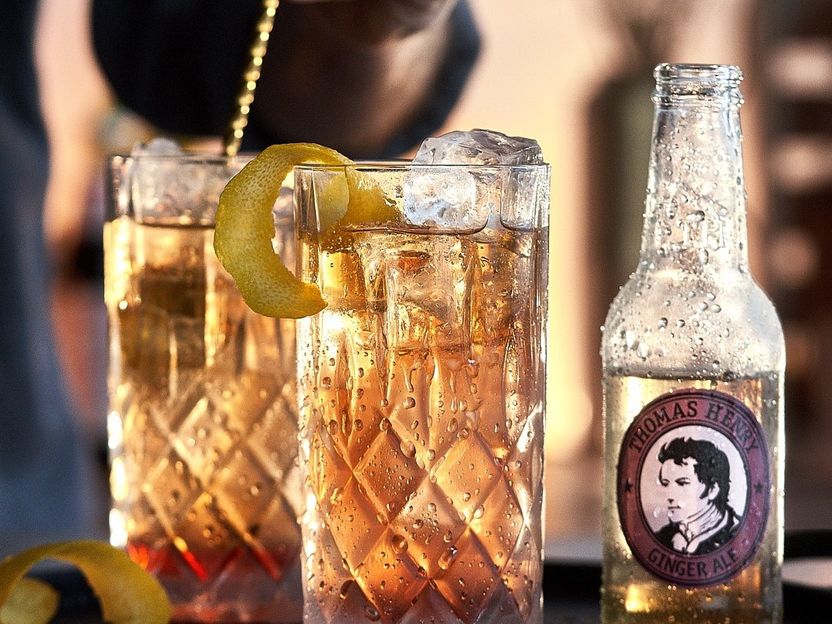A visit to the bar in Dry January - how it works
Thomas Henry presents study on bar culture
Christmas parties with colleagues, invitations from customers, followed by festive celebrations with family and friends and, of course, New Year's Eve. As full as the diary is in December, it is often empty in January. Not least because Dry January is becoming increasingly popular and more people are giving up alcohol completely in the first month of the year, which means fewer nights out.

Shirley Temple with Thomas Henry Ginger Ale_recipe image
THOMAS HENRY GmbH
But isn't it possible to go to a bar without alcohol? In a qualitative psychological study on bar culture conducted by COLIBRI Research in September 2023, Thomas Henry asked bar guests and bartenders about this, among other things. The results provide exciting insights:
- Drinks in the bar are above all a medium of communication.
- People enjoy themselves and come into contact with others, sometimes with and sometimes without alcohol.
- For the vast majority of respondents, a visit to the bar also works well without alcohol.
- The most important factors here are a high-quality alternative, fair prices and the right social environment.
So the Dry January trend does not necessarily rule out a visit to the bar, especially if the alcohol-free menu goes beyond boring juice spritzers and water. And even after January, guests now often want less alcohol. Nevertheless, the drink should be perfectly composed and presented by the bar professional. Thomas Henry's extensive portfolio caters precisely to this need on the bar side. "Our premium mixers work for drink creations and variations with and without alcohol," says Sigrid Bachert, Managing Director of Thomas Henry.
A selection of creative drink variations without alcohol, such as the Shirley Temple with Thomas Henry Ginger Ale, the Maple Mule with Thomas Henry Spicy Ginger or the Botanical Garden with Thomas Henry Botanical Tonic, can be found at www.thomas-henry.de/Drinks.
ABOUT THE THOMAS HENRY BAR CULTURE STUDY
To determine the psychological significance of the bar, Thomas Henry conducted a comprehensive survey with consumers and bartenders in collaboration with the COLIBRI Research Institute. For this purpose, 15 in-depth interviews with bar guests (n=15, 23-50 years) and six expert interviews with bartenders (n=6, 23-50 years) were conducted in Hamburg and Berlin in September 2023. The focus was on the socio-psychological functions of the bar as well as the needs and usage structures of the guests.
Note: This article has been translated using a computer system without human intervention. LUMITOS offers these automatic translations to present a wider range of current news. Since this article has been translated with automatic translation, it is possible that it contains errors in vocabulary, syntax or grammar. The original article in German can be found here.
Most read news
Other news from the department business & finance

Get the food & beverage industry in your inbox
By submitting this form you agree that LUMITOS AG will send you the newsletter(s) selected above by email. Your data will not be passed on to third parties. Your data will be stored and processed in accordance with our data protection regulations. LUMITOS may contact you by email for the purpose of advertising or market and opinion surveys. You can revoke your consent at any time without giving reasons to LUMITOS AG, Ernst-Augustin-Str. 2, 12489 Berlin, Germany or by e-mail at revoke@lumitos.com with effect for the future. In addition, each email contains a link to unsubscribe from the corresponding newsletter.


























































